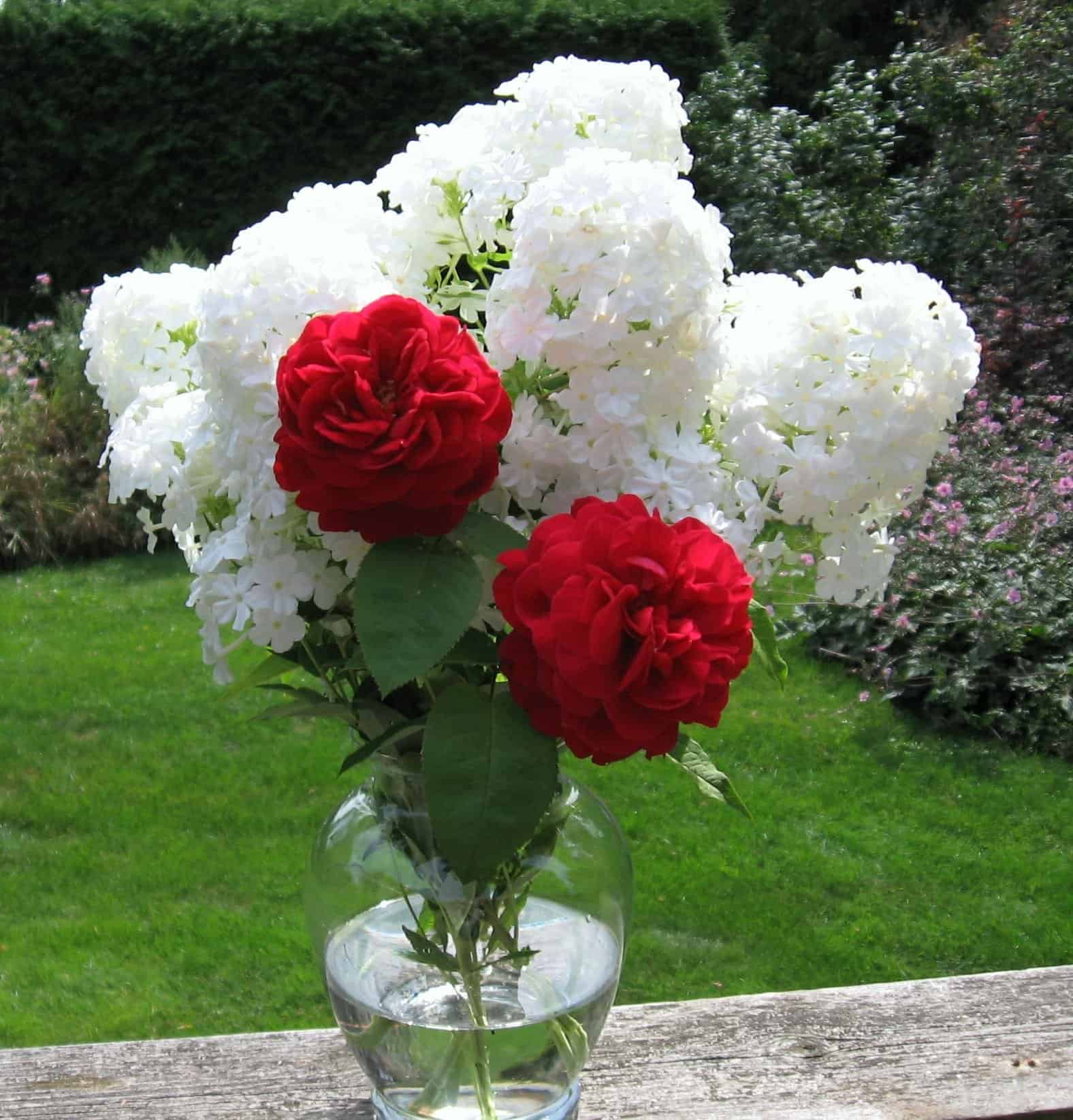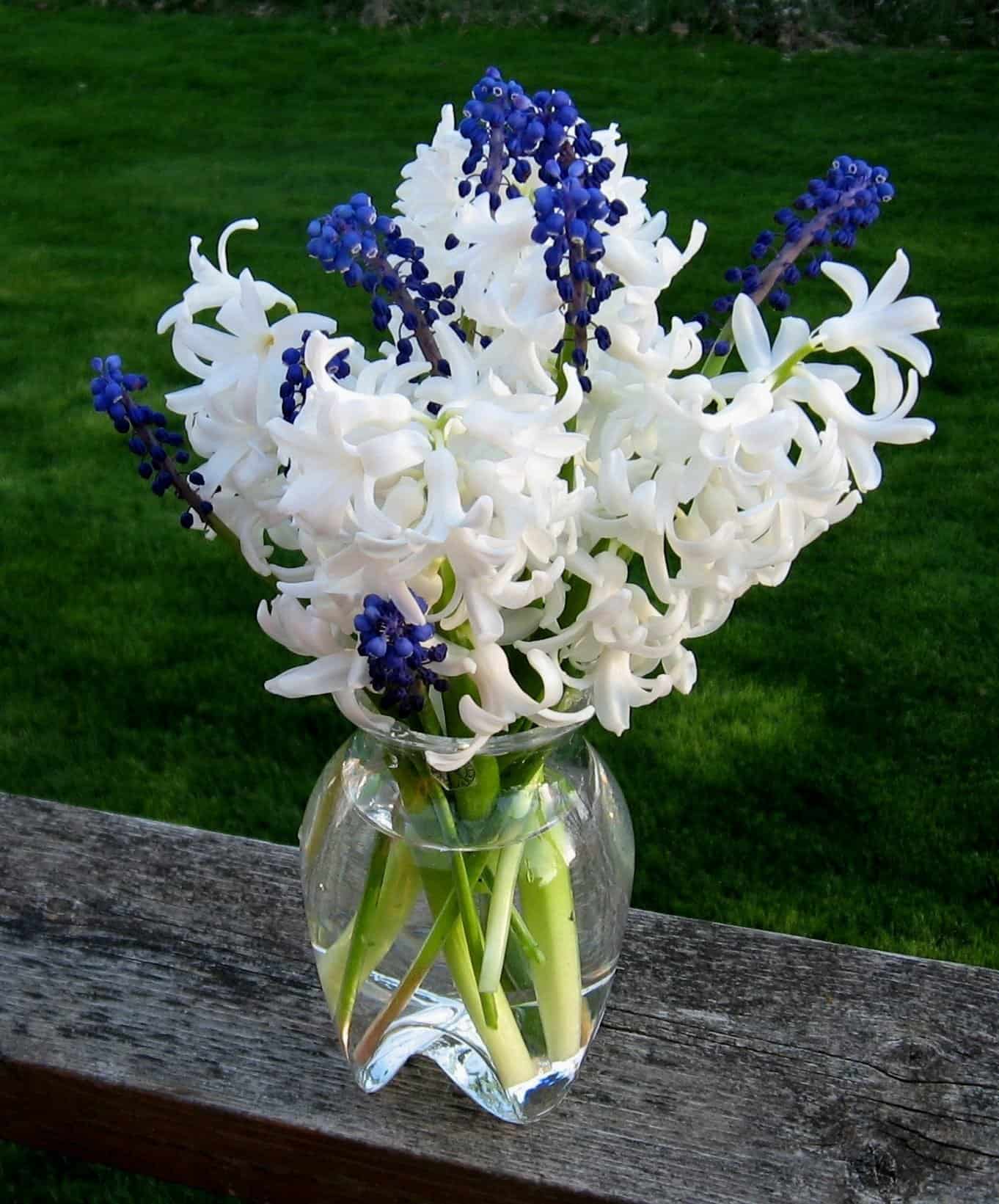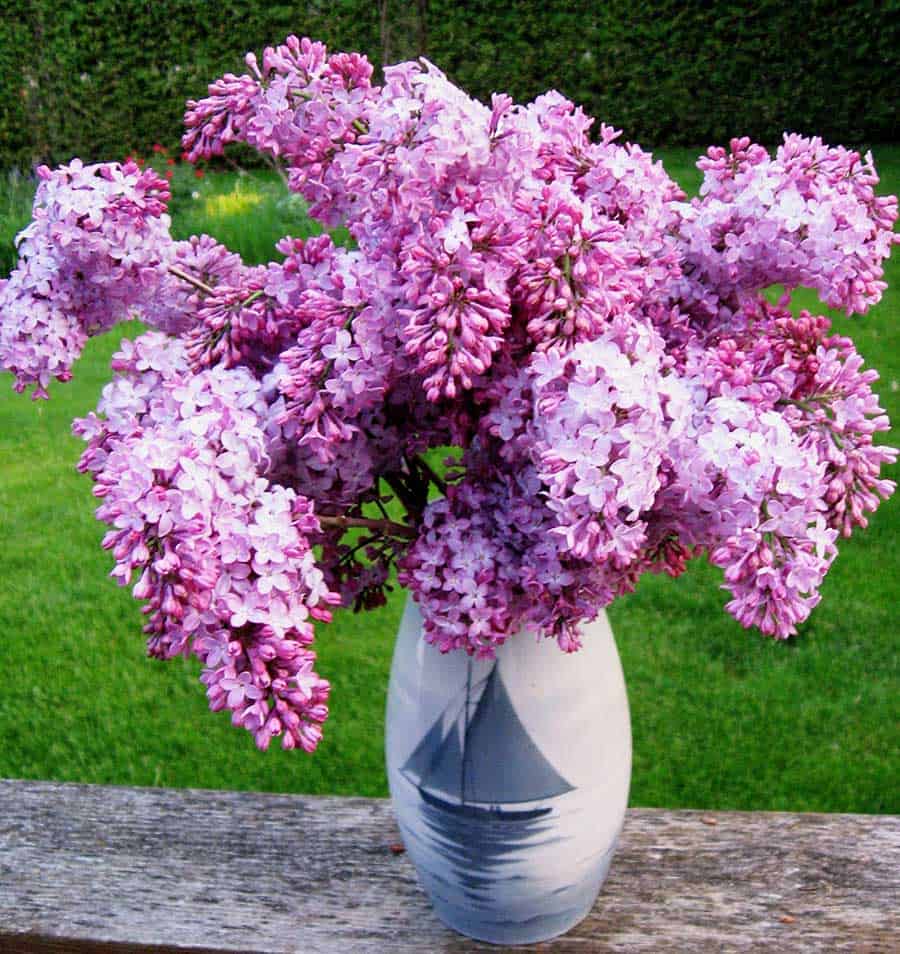
At my last garden (in Toronto), I dug a large flower bed in a full-sun location with the express intention of preserving it as an area for growing cut flowers destined exclusively for the vase. The first year I planted varieties that can be difficult to blend successfully in static herbaceous borders, such as bells of Ireland, gladioli, sunflowers and tuberoses.
But due to its enviable sunny, south-facing location, other plants soon began to crash the cutting garden party, and before long herbs, gooseberries, obscure Elizabethan vegetables and sundry horticultural curiosities vastly outnumbered the cut flowers.
Feeling that I had learned my lesson, when I moved to Beaverton 12 years ago, I began to harvest flowers from the borders proper, and gave up any notions I may have once held about cutting gardens. At first I was worried that I would denude the flowerbeds, but I quickly discovered that cutting a few flowers here and there is visually insignificant in full, well-planted borders.
Despite my horticultural training, I have never pretended to be a florist or floral designer (“I can grow ’em, but I can’t arrange ’em” used to be my motto). Nevertheless, in recent years I’ve enjoyed bringing vases full of flowers into the house, and I find that when I keep it simple — and use just one or two varieties per vase — it’s difficult to go too far wrong.
How to prolong the vase life of cut flowers
Over the years, I’ve learned a few simple techniques that significantly prolong the vase life of cut flowers:
1. Before harvesting flowers (early morning is best), arm yourself with a non-metallic bucket of warm (40°C) water, and cut stems with clean, sharp secateurs or florist’s scissors. Plunge the freshly cut blooms into water immediately after cutting. Flowers should be crisp and turgid with no brown spots or spilled pollen, both of which indicate age.
2. Most of the cut flowers we buy commercially have been “conditioned” before they go on sale, and it’s easy to condition flowers the same way at home.
“Basic conditioning” is recommended for all cut flowers: Start by adding florist’s preservative to the water in your vase. You can make your own by mixing ½ teaspoon (2.5 mL) bleach plus 1 tablespoon (12.5 g) sugar with 4 cups (1 L) of warm water (I always make extra for subsequent top-ups).
To avoid stagnation and bacterial growth, remove any foliage below the water line. Before starting to arrange your flowers, re-cut the stems on the diagonal under running water (to prevent air bubbles) and immediately place them in your vase. Once your arrangement is complete, leave the vase in a cool, dark, draught-free area for six to eight hours.
3. After harvesting, some flowers — notably chrysanthemums, hydrangeas and roses — tend to form a callus at the base of their stems that impedes water uptake. A simple method known as the “boiling water treatment” will prevent calluses from forming: First, wrap the flowerheads in paper towels to prevent any damage from steam. Next, place the stems in one inch (2.5 cm) of boiling water for three minutes, and then immediately plunge them into cool water. As well as preventing callus formation, the boiling water forces any air blocks at the base of the stem to expand and escape.
4. Once your arrangement is ready to display, place it away from direct sunlight and draughts, keep the water fresh and topped up, and if you’re a real keener, re-cut the stems under running water every two or three days.
White hyacinths with grape hyacinths

How to do it: I love the clean, fresh look of blue and white in combination. Before conditioning, wipe off any dripping sap from the bases of the hyacinth stems, and cut the white stem bottoms off the grape hyacinths. (I repeat this colour combo in late summer, using white ‘David’ garden phlox with purple-blue ‘Spark’s Variety’ monkshood.)
Tip: Garden phlox (Phlox paniculata cvs.) are sensitive to ethylene — the gaseous plant hormone given off by ripening fruit — so keep your arrangement away from the fruit bowl. Other ethylene-sensitive flowers include anemones, baby’s breath, carnations and pinks, lilies, snapdragons and sweet peas.
Lilacs
How to do it: Even the blackest thumbs can manage a simple vase full of purple lilacs like this one. For best results, cut lilacs when half the buds are still closed. Most woody-stemmed flowers benefit from having the bottom ½ inch (1.25 cm) of their of their stems slit into halves or quarters.
Tip: Make sure that the vase you’ve chosen doesn’t clash with your flowers. This early 20th-century Bing & Grondahl (Copenhagen) vase echoes and complements the hues of the lilacs without competing with them.
Peony, abelia and baptisia

How to do it: A combination of peonies, ‘Starlite’ baptisia and Korean abelia. I favour fragrant cut flowers, and the ethereally sweet scent of the Korean abelia (Abelia mosanensis, Zone 4) perfumes the whole house. All three flowers will last longer if they’re given the boiling water treatment. My grandmother’s (rather tarnished) sterling vase has a glass lining that protects both the silver and the flowers.
Tip: If you’re concerned about ants hitching a ride indoors on your peonies, leave the cut blooms outdoors in your garden bucket in a shady spot. After two or three hours, the ants will have all jumped ship.
Finally, as this is my last post in our series Gardening in the Summer of Canada’s 150th, I would like to thank Garden Making’s publisher Michael Fox and editor-in-chief Beckie Fox for allowing me the opportunity to share my thoughts with you over the past 20 weeks. And a special thanks to you — our readers — particularly those of you who have taken the time to share your own experiences and opinions. We’ve loved reading them all. Garden on!
Share your thoughts
Do you harvest cut flowers from your Canada 150 garden?



Great article! My hubby has just finished wheelbarrowing the last load of pea gravel down the path of my soon to be, cutting garden. ( no worry about non flowers impinging on the space… I have a 50′ X 75′ fully fenced (deer proof), veg garden.). I will be savouring the seed and plant catalogues over the winter to fill it up. And I thunk a few dwarf lilacs in the outside corners to anchor the space, would be a god idea after reading your article! Any suggestions for good cutting flowers for a full sun, wind blown (4b) location?
a friend passed along this article thinking it would be of particular interest
(it was!)
as I enjoy vases of cut flowers, but also because I have fairly recently moved to about 10 kilometres south of Beaverton.
Welcome to Brock Township! — a great location for both beginner and experienced gardeners. I would also encourage you to make contact with one of our three (or four) excellent local horticultural societies: Beaverton, Cannington and Sunderland (I believe the fourth is called Georgina Hort Soc., based in Wilfrid). Not to mention the upcoming September Fall Fairs (I’m slated to help judge the hort entries at the Beaverton Fall Fair). Bienvenue, Stephen.